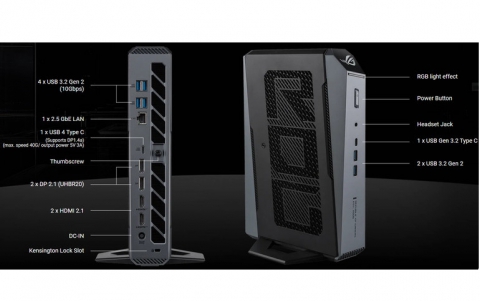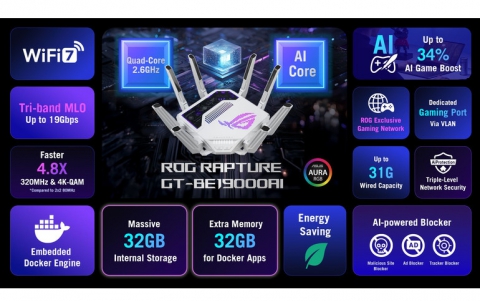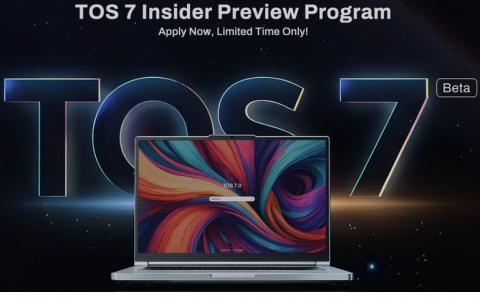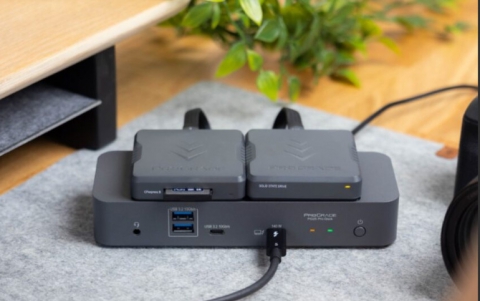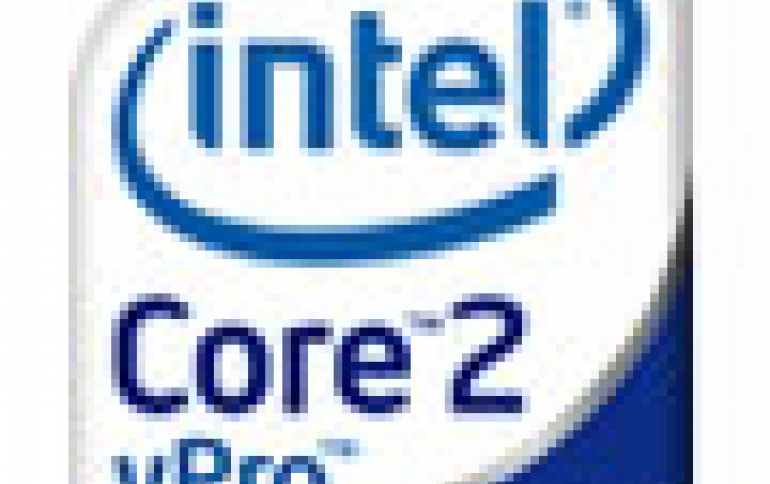
New Intel vPro Technology Enhances Security, Adds Automatic Tune-Ups
Intel today introduced its third-generation Intel vPro suite of business desktop PC technologies, which among other features enhances security and reduces the time and cost of maintenance by enabling PCs to literally think and act for themselves.
he new Intel vPro Technology (formerly codenamed "McCreary") combines the performance of Intel Core2 quad-core or dual-core processors with the new Intel Q45 Express Chipset and Intel 82567LM Gigabit Network Connection along with Intel Active Management technology 5.0.
This 2008 version for the first time extends IT organizations' reach to protect and manage PCs beyond the corporate firewall. With the new Remote Alert feature, a suddenly ailing PC ? even one that is turned off ? that is experiencing symptoms outside preset parameters can "call" for IT assistance on its own.
Using the new Remote Scheduled Maintenance feature, IT administrators can program PCs for regular tune-ups that have PCs automatically connecting to an IT management program for maintenance. With the new Fast Call for Help feature, the user can get immediate assistance over an out-of-band link by entering a key sequence, even if the computer is completely crippled with a failed operating system or hard drive.
In addition, for 2008 Intel beefed up access security with two new features. The new Access Monitor feature securely logs IT activity on systems, further closing the door on potential internal security breaches. The platform also offers the first embedded technology to authenticate PCs using Microsoft Network Access Protection, enabling protected out-of-band remote maintenance on Intel vPro-based systems.
For the first time, Intel has molded Intel vPro Technology in a form to specifically fit the needs of small businesses, those whose computer systems are likely managed by someone with no computer background at all. Designed for businesses with less than 25 notebooks or desktop PCs, Intel IT Director offers a user-friendly "dashboard" that provides status on key system settings and health parameters, capability to block connection to risky USB devices and a data back-up feature that enables users to work seamlessly through hard-drive failures.
For small businesses which periodically need immediate help with PC problems, Intel unveiled Intel Remote PC Assist Technology that connects those businesses with service providers that can assist when an end-user enters a key sequence. Once connected, service providers can take full advantage of the out-of-band capabilities, and security and management features of vPro Technology to solve problems remotely. For the service provider, Intel Remote PC Assist Technology means enhanced service delivery, reduced operational costs and broader access to customers. Initially, Intel Remote PC Assist will be available in North America.
Intel also introduced two motherboards supporting all of the new Intel vPro features. Aimed at channel customers, the Intel Desktop Board DQ45CB is for standard-sized PCs and the Intel Desktop Board DQ45EK is for small- form-factor systems.
Dynamic Virtual Client technologies (DVC), Intel's designation for a new group of computing models, work in conjunction with Intel vPro Technology to centralize data security and application management on a server, but "stream" applications on demand to a desktop or laptop PC where they run under the PCs own processing power. In this way, DVC preserves user mobility and performance, simplifies IT management and security, and, unlike thin-client models, does not require a large-scale burden on the datacenter. Citrix, Lenovo, and Microsoft recently announced DVC products or programs that take advantage of Intel vPro technology.
This 2008 version for the first time extends IT organizations' reach to protect and manage PCs beyond the corporate firewall. With the new Remote Alert feature, a suddenly ailing PC ? even one that is turned off ? that is experiencing symptoms outside preset parameters can "call" for IT assistance on its own.
Using the new Remote Scheduled Maintenance feature, IT administrators can program PCs for regular tune-ups that have PCs automatically connecting to an IT management program for maintenance. With the new Fast Call for Help feature, the user can get immediate assistance over an out-of-band link by entering a key sequence, even if the computer is completely crippled with a failed operating system or hard drive.
In addition, for 2008 Intel beefed up access security with two new features. The new Access Monitor feature securely logs IT activity on systems, further closing the door on potential internal security breaches. The platform also offers the first embedded technology to authenticate PCs using Microsoft Network Access Protection, enabling protected out-of-band remote maintenance on Intel vPro-based systems.
For the first time, Intel has molded Intel vPro Technology in a form to specifically fit the needs of small businesses, those whose computer systems are likely managed by someone with no computer background at all. Designed for businesses with less than 25 notebooks or desktop PCs, Intel IT Director offers a user-friendly "dashboard" that provides status on key system settings and health parameters, capability to block connection to risky USB devices and a data back-up feature that enables users to work seamlessly through hard-drive failures.
For small businesses which periodically need immediate help with PC problems, Intel unveiled Intel Remote PC Assist Technology that connects those businesses with service providers that can assist when an end-user enters a key sequence. Once connected, service providers can take full advantage of the out-of-band capabilities, and security and management features of vPro Technology to solve problems remotely. For the service provider, Intel Remote PC Assist Technology means enhanced service delivery, reduced operational costs and broader access to customers. Initially, Intel Remote PC Assist will be available in North America.
Intel also introduced two motherboards supporting all of the new Intel vPro features. Aimed at channel customers, the Intel Desktop Board DQ45CB is for standard-sized PCs and the Intel Desktop Board DQ45EK is for small- form-factor systems.
Dynamic Virtual Client technologies (DVC), Intel's designation for a new group of computing models, work in conjunction with Intel vPro Technology to centralize data security and application management on a server, but "stream" applications on demand to a desktop or laptop PC where they run under the PCs own processing power. In this way, DVC preserves user mobility and performance, simplifies IT management and security, and, unlike thin-client models, does not require a large-scale burden on the datacenter. Citrix, Lenovo, and Microsoft recently announced DVC products or programs that take advantage of Intel vPro technology.









